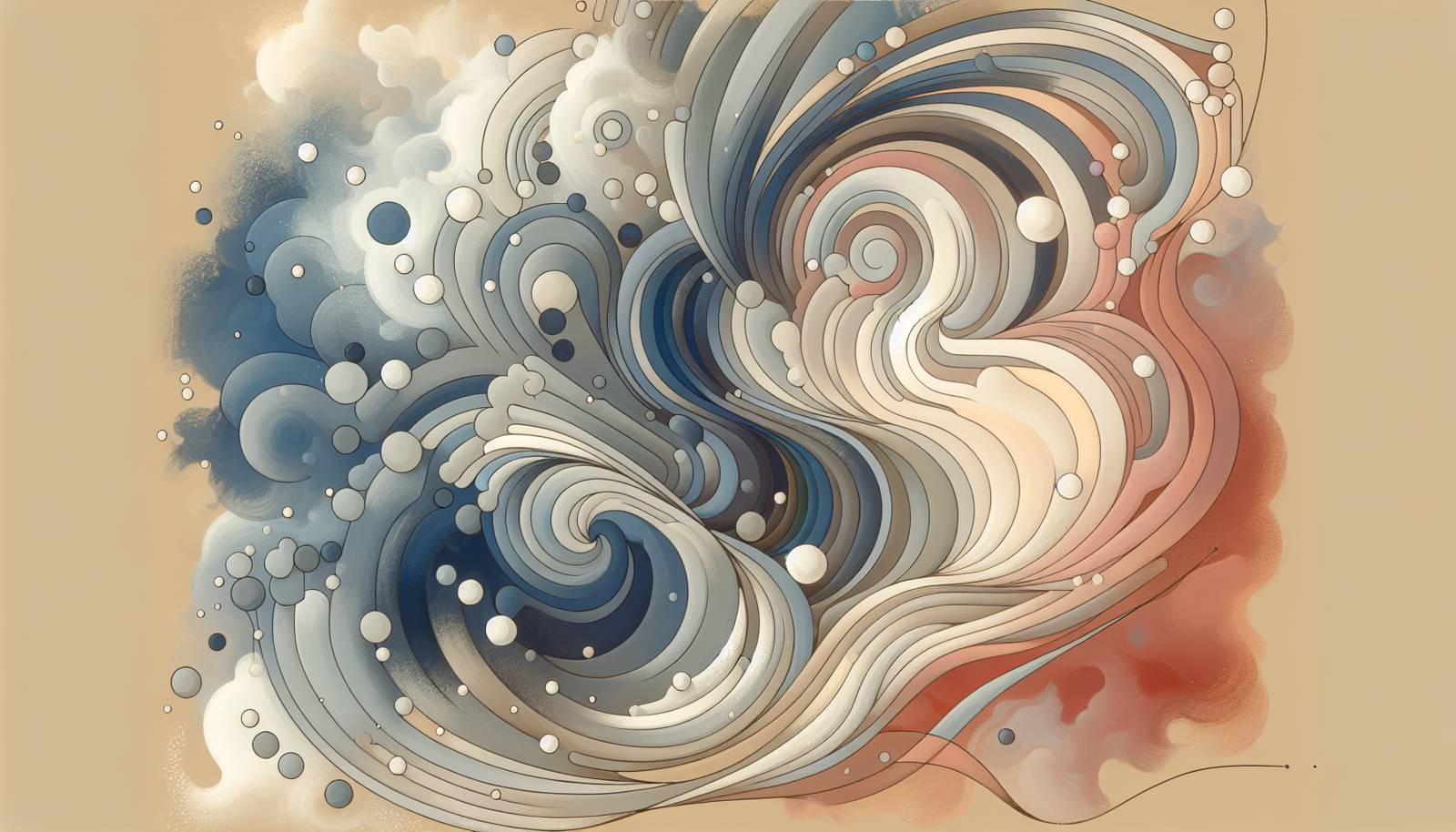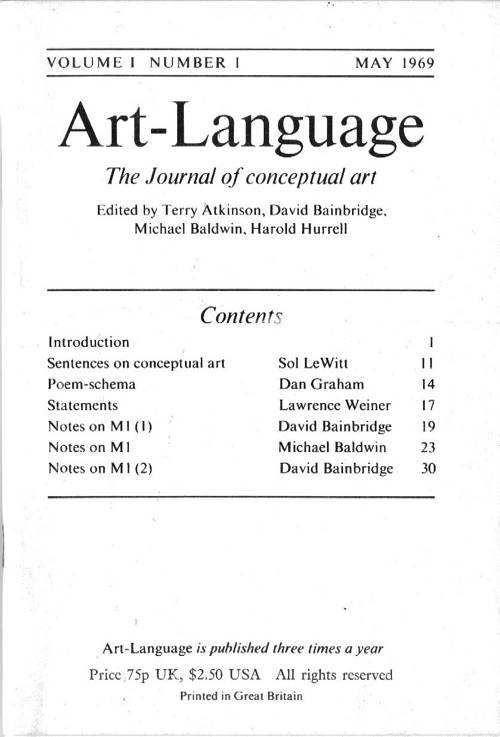
FAQ About The Influence of Conceptual Art in Contemporary Thought

What is conceptual art?
Conceptual art is an art movement where the idea or concept behind the work is more important than the finished art object. It emerged in the 1960s as artists began to question traditional perceptions of art. The movement emphasizes the artist's intent and the mental process involved in the creation of art, often employing minimalistic and non-traditional forms.

How did conceptual art influence contemporary art?
Conceptual art has significantly influenced contemporary art by shifting the focus from the aesthetic value of art to its underlying ideas and intellectual engagement. This movement paved the way for contemporary artists to explore new mediums and forms, including performance art, video art, and interactive installations, that emphasize concept over form.

Who are some pioneers of conceptual art?
Some pioneers of conceptual art include artists like Sol LeWitt, who articulated early theoretical frameworks for conceptual art, Joseph Kosuth known for works like "One and Three Chairs," and Yoko Ono with her instruction-based art. Other key figures include Marcel Duchamp, whose earlier works influenced the movement, and Lawrence Weiner, who used language as a material for art.

Why is conceptual art important in philosophical discourse?
Conceptual art is important in philosophical discourse because it challenges the traditional boundaries of what art can be and promotes a deeper engagement with ideas and concepts. It questions the nature of art, perception, and reality, aligning closely with philosophical inquiries about meaning and existence. This discourse often overlaps with postmodern philosophy and semiotics.

How does conceptual art redefine creative boundaries?
Conceptual art redefines creative boundaries by prioritizing the ideas and concepts over the aesthetic or material aspects of art. This approach allows artists to explore a breadth of new mediums and forms, including language, sound, performance, and ephemeral or documentary art, breaking away from traditional art norms and encouraging innovative expression.

Can conceptual art be considered real art if it sometimes lacks physical form?
Yes, conceptual art is considered real art despite sometimes lacking a physical form. It challenges the traditional art world's focus on the tangible and aesthetic, offering an alternative that places value on the process, concept, and viewer's interpretation as integral elements of the artistic experience. This is part of what makes conceptual art revolutionary and influential in contemporary thought.

What are some examples of conceptual art techniques?
Examples of conceptual art techniques include the use of text as art, such as Lawrence Weiner's language-based pieces, instruction art as seen in Sol LeWitt's wall drawings, and performance art involving scripts or scenarios that rely on the audience's participation. These techniques emphasize the idea as the art itself, often leaving room for interpretation and engagement.

How does conceptual art intersect with performance art?
Conceptual art intersects with performance art through the emphasis on the idea and the artistic process rather than the physical art object. Both forms often incorporate audience participation and can include scripted or improvised scenarios, focusing on temporality and experience. This intersection illustrates how art can take on forms beyond traditional visual art, engaging viewers in novel ways.

What role does language play in conceptual art?
Language plays a crucial role in conceptual art by offering a medium to convey ideas directly and provocatively. Artists like Joseph Kosuth and Lawrence Weiner use text to challenge viewers' perceptions and to communicate complex concepts. Language blurs the line between art and philosophy, making it an essential tool in the conceptual art movement.

What is the relationship between conceptual art and minimalism?
There is a strong relationship between conceptual art and minimalism, as both movements broke away from traditional forms and focused on simplicity and reduction. Minimalism's emphasis on basic forms and reduced aesthetics influenced conceptual artists, who took simplicity as an opportunity to foreground ideas and concepts rather than physical form, leading to stark and thought-provoking artworks.

How does conceptual art encourage viewer interaction?
Conceptual art encourages viewer interaction by presenting art that requires intellectual engagement rather than passive observation. Its reliance on ideas and open-ended outcomes invites viewers to interpret, question, and even participate in the creation process, transforming them from mere observers into active contributors to the artwork's meaning.

What impact did Marcel Duchamp have on conceptual art?
Marcel Duchamp had a profound impact on conceptual art, primarily through his 'readymades,' such as the famous "Fountain" (a urinal presented as art). Duchamp's work questioned the very definition of art, influencing conceptual artists to explore the importance of idea over form and setting the stage for art that challenges traditional perceptions.

How has conceptual art influenced other disciplines?
Conceptual art has influenced other disciplines such as literature, architecture, and theater by introducing new ways of thinking about narrative, form, and function. In these fields, the idea that concepts can drive innovation and expression has led to more interdisciplinary approaches and experimental practices, broadening horizons and fostering creativity.

Are there any criticisms of conceptual art?
Yes, there are criticisms of conceptual art, often centered around its perceived lack of skill or craftsmanship, as it prioritizes ideas over traditional artistic production. Some critics argue that it devalues visual aesthetics and can be overly cerebral or inaccessible. However, supporters contend that these critiques misunderstand the movement's intent to expand the boundaries of what art can entail.

How do conceptual artists document their work?
Conceptual artists often document their work through photographs, written instructions, and video recordings. The documentation becomes an integral part of the art itself, serving as both a record of the idea and a means for it to be replicated or reinterpreted. This ensures the preservation and communication of the intended concept, even when the physical work is temporary or non-existent.

What is the significance of the 'dematerialization' in conceptual art?
The 'dematerialization' of art in conceptual art refers to the shift away from focusing on physical objects to emphasizing ideas and concepts. This was significant in highlighting that the essence and value of art can reside in intellectual or fleeting forms, challenging traditional notions of art as materially bound and encouraging diverse new practices.

How does conceptual art relate to postmodernism?
Conceptual art relates to postmodernism in its rejection of grand narratives and embracement of plurality, ambiguity, and the deconstruction of traditional artistic norms. Both stress the role of the viewer in interpreting meaning and question established truths, ultimately broadening the understanding of art and philosophy in contemporary culture.

Is there a difference between contemporary art and conceptual art?
While conceptual art is a specific movement within the broader scope of contemporary art, not all contemporary art is conceptual. Contemporary art encompasses a wide array of styles and ideologies that have emerged since the mid-20th century. Conceptual art forms one influential aspect of contemporary art, particularly influencing others with its emphasis on ideas and concepts.

What is the role of the artist's intent in conceptual art?
In conceptual art, the artist's intent is central to understanding the work. The primary focus is often on conveying a specific idea or provocation, making how viewers engage with that intention integral to the experience of the art. This contrasts with traditional forms where visual composition might dominate the viewer's focus, emphasizing instead the narrative and conceptual depth provided by the artist.

Can anyone create conceptual art, or does it require specific training?
While anyone can theoretically create conceptual art, understanding its philosophies and approaches can enrich the creation process. Conceptual art focuses on ideas, so formal training isn't necessarily required, but familiarity with art movements, theories, and criticism can enhance an artist's ability to effectively communicate their concepts.
